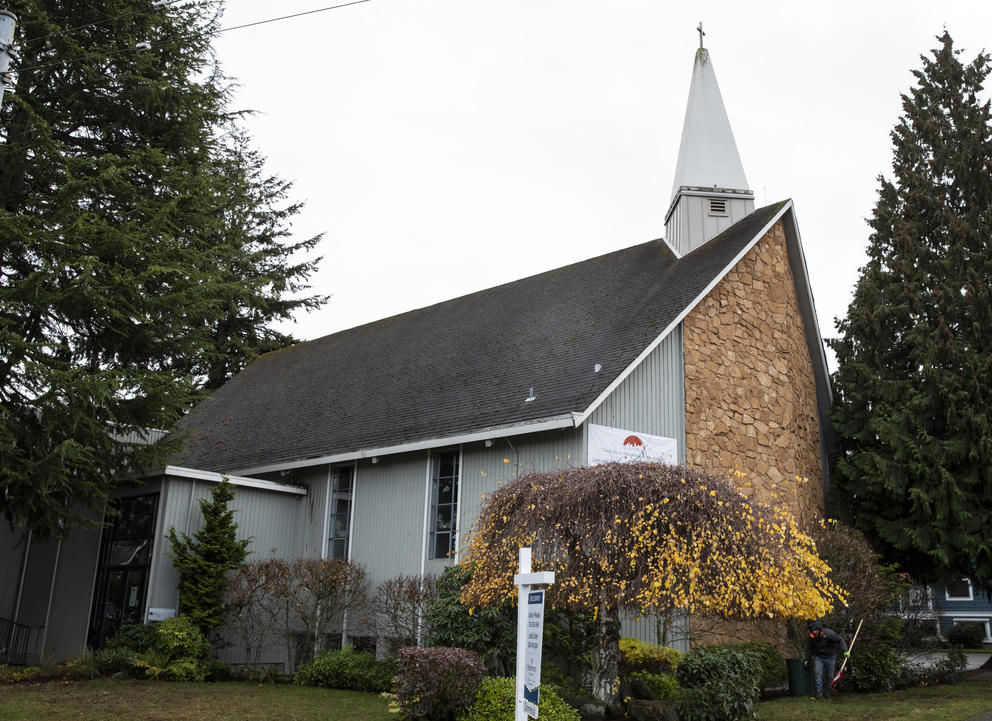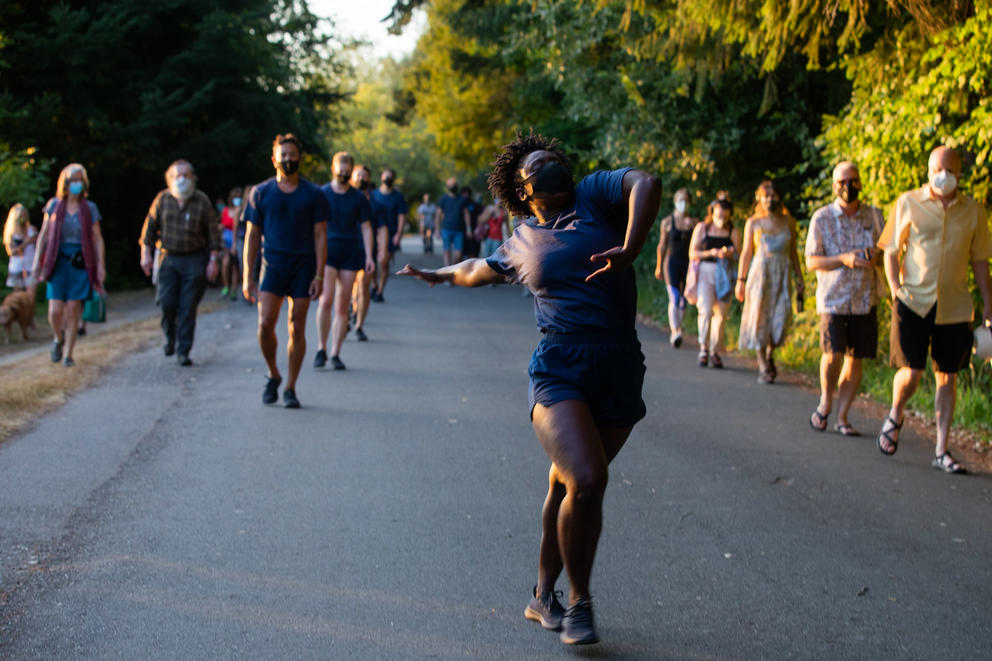On December 15, the company will finalize the purchase of a 14,000-square-foot building atop Queen Anne hill, becoming one of the very few local nonprofit arts groups of any size to own its space. The company plans to use the building for rehearsals, dance classes and its administrative offices; they’ll continue to perform at venues around the greater Seattle area.
Over the years, Whim W’Him has built a reputation for presenting new works by founder and artistic director Olivier Wevers and commissioning dances from internationally recognized choreographers including Annabelle Lopez Ochoa, Penny Saunders and Zoe Scofield.
And unlike most indie dance troupes, which hire individual dancers on a per-show basis, Whim W’Him’s seven dancers have a 35-week contract and health benefits — an achievement for any small arts organization.
But ever since 2009, when Wevers established the company while still a principal dancer with Pacific Northwest Ballet, he’s had a bigger vision.
“It’s always been part of the idea to start a school to help fund the company,” Wevers explains. “But we couldn’t do that without the space. It’s been like a catch-22. How do we get there?”
The new building offers a clear pathway, one that opened when a small nondenominational church a couple of blocks east of the Queen Anne Trader Joe’s decided to shut its doors.
Even before the pandemic, All Saints’ Church was having a hard time making ends meet in the neighborhood, according to Pastor Bill Berger.
“We’re a smaller church in a very expensive part of Seattle,” says Berger. All Saints meets in person only two Sundays a month, a result of both the pandemic and an ongoing decline in membership. The sanctuary, with its soaring wooden ceiling and choir loft, could hold several hundred congregants, but only three dozen chairs are now arrayed in neat rows.
That small membership couldn’t support operations, so Berger had to look outside the congregation for funds. “We brought in income to the tune of about $10,000 a month to help sustain us,” he says.
Some of that income comes from a cell phone tower, its base enclosed in wallboard in the sanctuary, concealed like water pipes or heating ducts. The tower extends through the roof and up the steeple. The church also leases its ground floor to a day-care center, and created a co-working space it rents to neighbors. But the money barely covers the bills.
Earlier this year, Berger and his small congregation decided to sell their church building, constructed in 1967, as well as an adjacent house where Berger and his wife have been living. The asking price: more than $4 million, market rate for Upper Queen Anne.
Almost as soon as it went on the market, Berger began to worry that demolition of his beloved church might affect the residential street’s tranquility. It’s just two blocks from a busy retail district, but this leafy street lined with Craftsman bungalows has the feel of a sleepy village. Although zoning restrictions would limit any replacement buildings to single-family homes, Berger and his parishioners preferred to find a buyer who would keep the building — and its long-term day-care tenant — intact.
“It couldn’t be handed off to just anybody,” says Ashlyn Pawlak, both an All Saints’ congregant and the real estate agent handling the sale for the church.
Meanwhile, Wevers and his advisors had been scouring the city for an affordable home for Whim W’Him. When they came across All Saints Church, Wevers approached a longtime patron with a proposition.
“What I asked was, ‘Will you buy this building and I will lease it from you?’”
Instead, the benefactor (who prefers to remain anonymous) extended a personal loan for the full purchase price. Income from the day-care center and the cellphone tower would cover monthly repayments while Whim W’Him took several months to build out studios for dance classes and company rehearsals, using grant money from the Jolene McCaw Family Foundation.
“When [Whim W’Him] came in and showed us how they were going to love the space, to use it for art and dance, it was everything that Bill, in a perfect world, wanted,” Pawlak says.
Whim W’Him’s plans to offer classes to community groups, with full scholarships for aspiring BIPOC students, plus the fact that the dance company was offering cash up front, prompted Berger and the church’s board of directors to lower their asking price to $3.5 million.
“A lot of people put a lot of care and love into this place,” Berger explains. He felt Wevers was a buyer who would feel the same way about the space, and he wanted to do what he could to make the sale happen.
Even in a region as wealthy as this, most small nonprofit arts organizations don’t typically encounter this lucky confluence of angel benefactors, according to Matthew Richter, who spent eight years as Seattle’s Cultural Spaces Liaison, where he helped arts organizations find affordable homes. He’s now the interim executive director of Seattle’s Cultural Space Agency (CSA), a public/private entity dedicated to helping BIPOC communities build wealth through cultural building ownership.
Richter says Seattle’s hot real estate market (which he notes has moderated only slightly in the current housing market cool-down) makes it difficult for nonprofits to find rental space, let alone afford down payments and the other costs of building ownership.
Although Seattle has no public capital funds for cultural projects per se, it has set aside money to assist groups that have been disproportionately affected by displacement. The CSA recently helped two BIPOC-led groups, the Northwest Tap Connection and Union Cultural Center, draw on those funds to purchase a shared organizational home in a new mixed-use development in South Seattle.
Despite the financial challenges, Richter believes building ownership is the best way for any nonprofit to weather the rise, or fall, of the local real estate market.
“If you’re running a business in a building and you own it, you’re not subject to the whims of an owner who’s looking for profit margin and not prioritizing [your] mission,” he says.
Richter and the CSA are trying to educate real estate developers about the benefits of including cultural spaces in their projects, from higher occupancy rates and increased business activity at neighboring cafes, bars and restaurants to increased property valuations, as noted in a survey by the National Trust for Historic Preservation.
Pastor Berger didn’t need data to convince him that Whim W’Him was the right buyer.
“As a church we’ve valued being part of the neighborhood, and believed in fostering a community that is kind, hospitable, welcoming and safe,” Berger says. “Though the emphasis is different, we believe Olivier and his dance company will continue that feeling of kindness for Queen Anne.”
Berger’s especially pleased that, even after he hands over the keys, he’ll lead one last Christmas Eve service before Whim W’Him moves in at the end of December.
And that’s when the real work of transforming a church into a dance studio can begin. “I never really believed this could happen.” Wevers says. “Having this space, we can take the next step. It feels like such a gift.”
Get the latest in local arts and culture
This weekly newsletter brings arts news and cultural events straight to your inbox.






